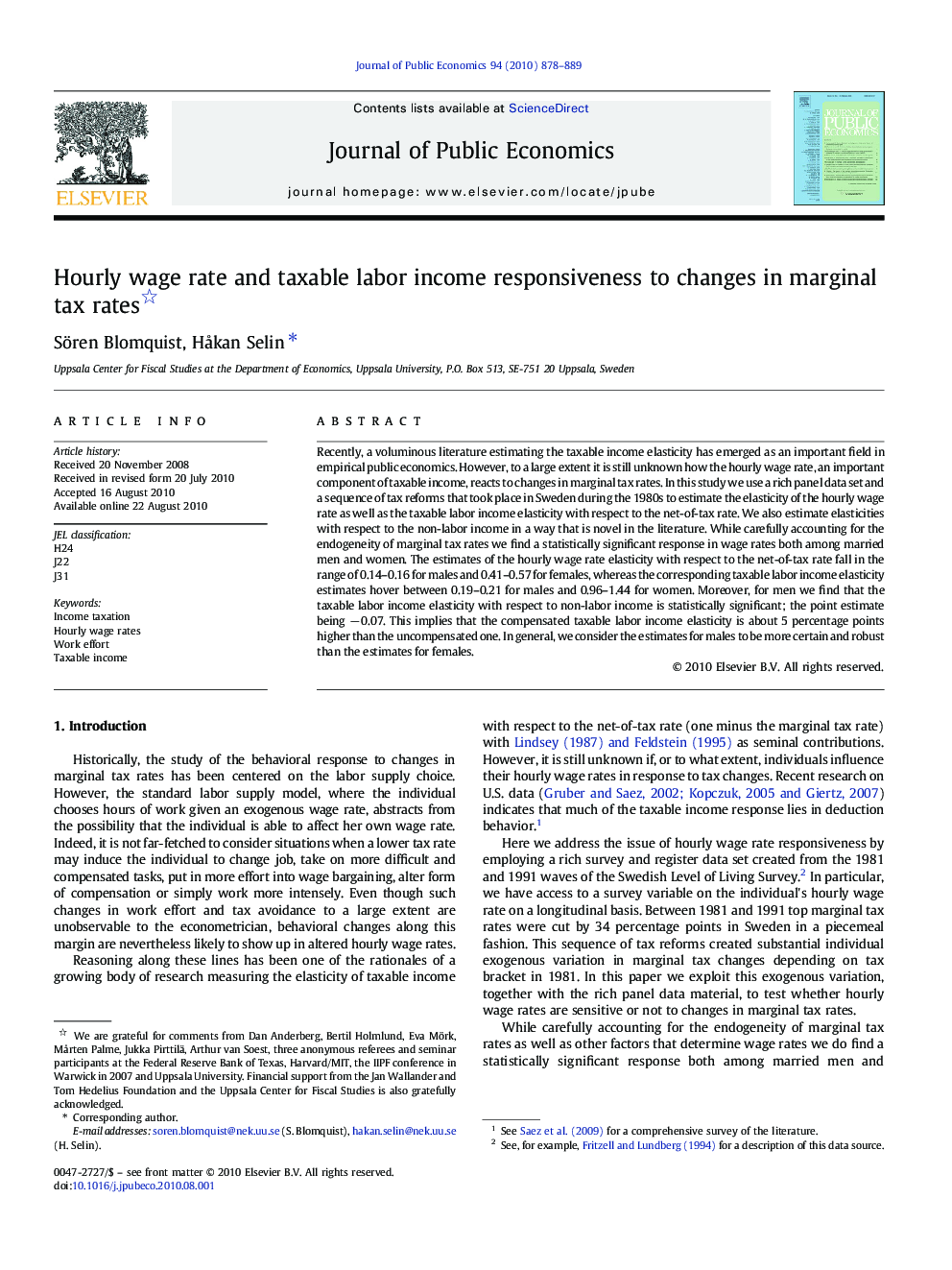| Article ID | Journal | Published Year | Pages | File Type |
|---|---|---|---|---|
| 969804 | Journal of Public Economics | 2010 | 12 Pages |
Recently, a voluminous literature estimating the taxable income elasticity has emerged as an important field in empirical public economics. However, to a large extent it is still unknown how the hourly wage rate, an important component of taxable income, reacts to changes in marginal tax rates. In this study we use a rich panel data set and a sequence of tax reforms that took place in Sweden during the 1980s to estimate the elasticity of the hourly wage rate as well as the taxable labor income elasticity with respect to the net-of-tax rate. We also estimate elasticities with respect to the non-labor income in a way that is novel in the literature. While carefully accounting for the endogeneity of marginal tax rates we find a statistically significant response in wage rates both among married men and women. The estimates of the hourly wage rate elasticity with respect to the net-of-tax rate fall in the range of 0.14–0.16 for males and 0.41–0.57 for females, whereas the corresponding taxable labor income elasticity estimates hover between 0.19–0.21 for males and 0.96–1.44 for women. Moreover, for men we find that the taxable labor income elasticity with respect to non-labor income is statistically significant; the point estimate being − 0.07. This implies that the compensated taxable labor income elasticity is about 5 percentage points higher than the uncompensated one. In general, we consider the estimates for males to be more certain and robust than the estimates for females.
